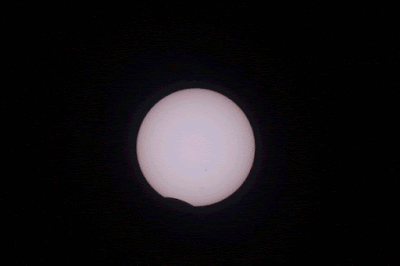Photo: Hannes Pieterse (ASSA Bloemfontein)
A Star Party in the warm heart of Central South Africa
23 - 25 June 2017 (Friday - Sunday)
Prepairing for the FS Star Party
About Scope covers- Scope covers 1
- Scope covers 2
- Scope cover 3
ASSA Deepsky 100 Observing List - Created for the FS Star party (18:57 - 0546)
- They are all visible - Try a Deepsky Marathon
A comet in your eypiece (24 June 2017 - already visible)
On this night C/2015 V2 (Johnson) is best visible between 18:34 and 00:10, with the optimum view at 20:24. Look for it in Virgo, high in the sky in complete darkness. It is obvious visually in the Orion SkyQuest XT10 Dob. Use the Ultima 2" LX 17 mm 2.0x for optimum visual detection. It is magnitude 8 with a diameter of 9.6'.
- Chart of the comets position (24June 2017) Make a printout and bring along.
To dew or not to dew
Keep it simple
- Are your cellphone glued to the palm of your hand? Use Twilight for Android!
Where
On the farm Gansvlei close to Brandfort (13km)
GPS Coordinates: 28°47'48.63"S 26°28'25.66"E Gansvlei Information (Pdf) Booking via Shaun Staats - assabfn@gmail.com
GPS Coordinates 28°47'48.63"S 26°28'25.66"E
Google Earth - Gansvlei - FS Star Party
Observation site
- Storage room close to observing site during night/day.
- Separate astro photography site available not to disturb serious observers.
- Electricity available for telescope and electronic equipment (No kettles or heaters).
- Observers must bring their own leads to get power from a central point in the veld.
- Bring covers if you want to leave your equipment in the veld during the day.
- Cell Phone addiction. Make a red cover.
- Computers: Screen not to face your neigbours.
Deep-sky Marathon
ASSA Bloemfontein did the first Deep-sky Marathon on Gansvlei in 2014 . (ASSA Top-100 Observing List). It is based on the very popular Messier Marathon. It was customized for deep sky objects visible in Southern-Africa.
Visit the ASSA Marathon web page Sections > Deep-sky Section > Nebulae > Clusters>
Deep-Sky Marathons
Download Observing lists for the Free State and Karoo Starparties
- Scroll down to Observing Lists for the Southern Hemisphere
( ASSA Deepsky 100, Lacaille and Messier)
The FS Star Party is not about marathons alone. It is also an event where astro friends will do some serious observing, astro photography and relax with hot coffee and serious braaiing.
Weather
2016 2°C (23:00 Friday); 10°C (00:00 Saturday; with wind and clouds moved over late in the evening. Clear early morning, with wind)
2015 dew caused havoc. Bring your dew heaters. Come prepared!
2014 Extreme – We measured -7°C during the first night. Prepare with warm clothing and bedding.
Meals
Bring your own food according to your dietary preferences.
Hot beverages will be available during the night at a Coffee point close to the observing point.
Central braai area available. We braai early to be ready for the nights observing.
Brandfort - 13 km
- Branfort Slaghuis/Butchery is the place to buy your meat (14 Voortrekker St, Brandfort)
Bloemfontein 52 km
Provisional Programme
Friday – 23 June 2017Afternoon: Arriving and setting up at observing point
Evening - Early Morning: Observing
Saturday – 24 June 2017
Morning: Visit Brandfort or sleep late; (No official programme).
Evening - Early Morning: Observing
Sunday – 25 June 2017
Breakfast and we all leave!
General
2017
1. Registration fee – R100 p/p
2. Accommodation costs
Per night Tariff:
R100 per person per night. Include bed, hot shower, kitchen
Camp in own tent:
R80 per person per night. Include bed, hot shower, kitchen (Bring your own bedding. It is deep winter – be prepared.
- Wood for barbeque (Friday/Saturday afternoon) available.
- Venue available for Friday and Saturday night (23/24 June 2017)
Cash payment on arrival.
Contact Shaun Staats – via assabfn@gmail.com
To book
Cut and paste the info below and email your information to assabfn@gmail.com
Name / Surname:
ASSA Centre / Other:
Number of people:
Email:
Cell no: (Will add to Whatsapp group)
Bed in Room (Number): (No single/double Rooms available)
Camp site:
Other accommodation
Various
Ou Pastorie
Lekkeslaap – Near Brandfort
June is Deepsky Marathon Month at the Free State Star Party - Helpful links
- Deep-Sky Marathons (ASSA Website)
(Dunlop Catalogue and Lacaille List available on this page) - Article in Nightfall "Birth of a Deep-Sky Marathon"
- Deep-Sky Observer's Companion Database – DOCdb
- ASSA Top-100 Deep-Sky Observing List
- Saguaro Astronomy Club's 2015 All Arizona Messier Marathon
- Free State Star Party
- Stellarium software
- Cartes du Ciel software
- Jet stream predictions for Southern Africa
- Deep-Sky Hunter Star Atlas




































